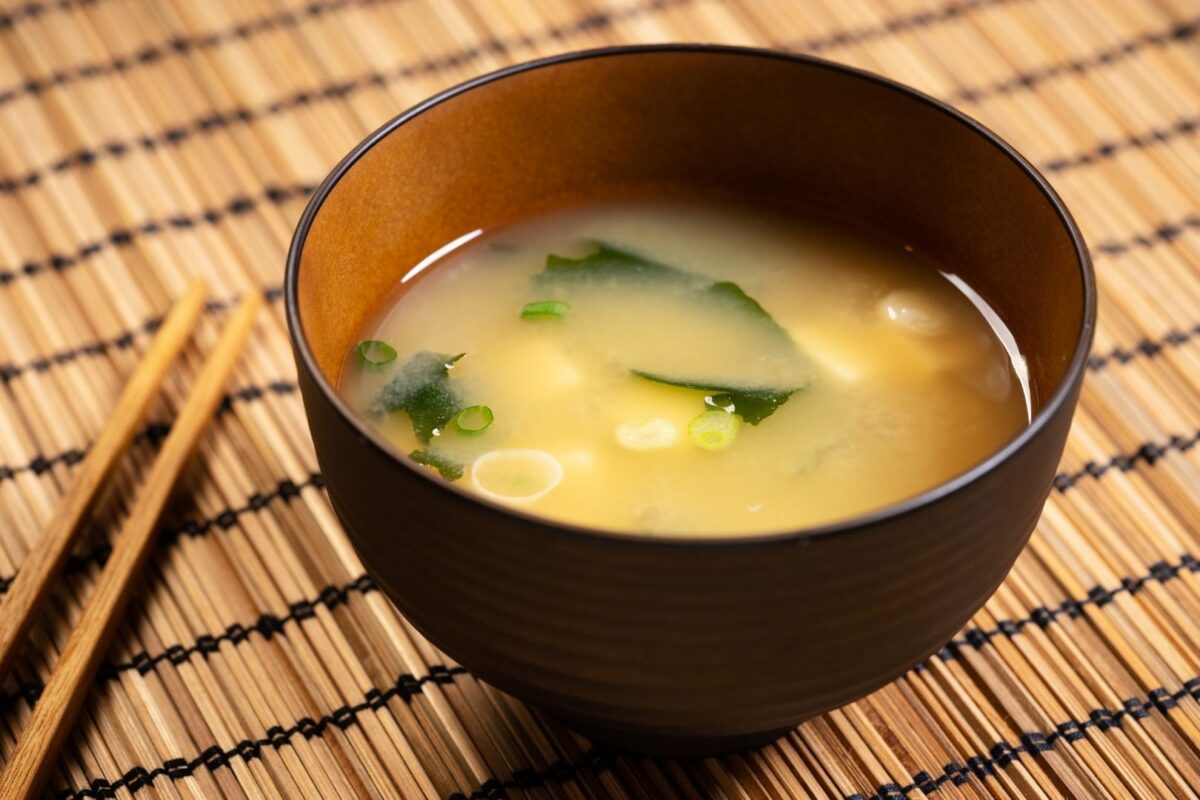There’s something magical about a warm bowl of miso soup. It’s simple yet deeply comforting, the kind of dish that feels like home even if you didn’t grow up with it. In Japan, miso soup is more than just a recipe—it’s a daily ritual, often enjoyed alongside rice and pickles for breakfast or as a side dish during lunch and dinner. For centuries, it has been cherished not only for its flavor but also for its nourishing qualities.
When I first learned to make miso soup at home, I was surprised at how quickly it came together—just a few ingredients, a little simmering, and suddenly, I had a bowl that tasted as soothing as something served in a cozy Japanese eatery. It’s the kind of recipe I turn to when I need warmth, balance, and a touch of comfort, whether on chilly evenings or as a gentle start to a meal.
Key Ingredients
- Miso Paste – The star of the soup. Fermented soybeans create a rich, savory paste that brings depth and umami. There are different types: white miso (mild and slightly sweet), yellow miso (balanced and versatile), and red miso (robust and salty). Choosing the right miso can shape your soup’s flavor profile.
- Dashi (Soup Stock) – The foundation of authentic miso soup. Traditionally made from kombu (kelp) and bonito flakes, it provides a delicate oceanic note that enhances the miso. For a vegetarian version, you can make dashi with just kombu or add dried shiitake mushrooms.
- Tofu – Cubes of soft tofu add protein and a silky contrast to the broth. They soak up the flavors beautifully without overpowering the soup.
- Wakame Seaweed – This rehydrated seaweed adds a subtle chewiness and natural brininess that pairs perfectly with the broth.
- Scallions – Freshly sliced scallions sprinkled on top provide brightness and a little crunch to balance the richness.
Step-by-Step Recipe
- Prepare the Dashi: In a pot, combine a piece of kombu with water and slowly bring it to a near boil. Just before it bubbles, remove the kombu (leaving it too long can make the broth bitter). Add bonito flakes if you’re using them, then strain. If you’re pressed for time, high-quality instant dashi is also a great option.
- Add Tofu and Wakame: Gently place small cubes of tofu and a spoonful of rehydrated wakame into the hot dashi. Let them warm through for just a few minutes—no hard boiling, as tofu is delicate.
- Dissolve the Miso: In a small bowl, take a ladleful of hot broth and stir in your miso paste until smooth. Then return this mixture to the pot. This step ensures the miso dissolves evenly and preserves its nutrients and delicate flavor. Keep the heat low; miso should never be boiled.
- Finish with Scallions: Right before serving, sprinkle chopped scallions on top. Their fresh bite perfectly complements the mellow richness of the broth.
From start to finish, the process takes about 15 minutes—perfect for beginners and seasoned cooks alike.
Variations to Try
- Mushroom Miso Soup – Add shiitake, enoki, or button mushrooms for an earthy depth.
- Noodle Miso Soup – Stir in soba or udon noodles to turn your bowl into a heartier meal.
- Seasonal Vegetables – Try adding spinach, daikon, carrots, or bok choy for extra nutrients and flavor.
- Spicy Miso Soup – A touch of chili paste or a sprinkle of shichimi togarashi (Japanese seven-spice) gives the soup a warming kick.
Tips for Choosing the Right Miso Paste
- White Miso (Shiro Miso) – Mild, slightly sweet, perfect for beginners or those who prefer a gentle flavor.
- Yellow Miso (Shinshu Miso) – Balanced and versatile, great for everyday use.
- Red Miso (Aka Miso) – Stronger, saltier, and aged longer. Best for bold flavors or when pairing with heartier ingredients.
My personal favorite for miso soup is a mix of white and yellow miso—it gives a lovely depth without being too overpowering.
Serving Suggestions
Miso soup is traditionally served as a side dish with rice, pickles, and fish, but it’s also wonderful as a light lunch or dinner starter. I love serving it in small bowls alongside sushi nights at home, or even as a cozy midday pick-me-up. It pairs beautifully with rice balls (onigiri), tempura, or even a simple salad.
Nutritional Benefits
Miso soup may be small in portion, but it’s packed with nourishment:
- Probiotics – Thanks to the fermentation in miso, the soup supports gut health.
- Protein – From tofu and miso, it provides a satisfying plant-based protein boost.
- Vitamins & Minerals – Seaweed contributes iodine, calcium, and iron, while scallions add antioxidants and vitamin C.
- Low in Calories – A bowl typically ranges between 70–100 calories, making it a light yet filling addition to any meal.
So go ahead, try making miso soup at home. You might just discover it becomes one of your favorite kitchen rituals. And if you put your own spin on it, with mushrooms, noodles, or seasonal vegetables. Happy cooking!
